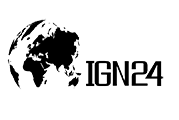Infusion therapy is the method in which drugs are received by patients in a vein through needles or catheters. This is a cost effective treatment at home instead of a health care center or other care environment. Home infusion therapy requires the administration of medications or biologicals intravenously or subcutaneously to a person at home. The components necessary to perform home infusion includes medication, antivirals, equipment, a pump and supplies such as tubing and catheters. In order to train and inform patients and caregivers about the safe administration of infusion drugs in the home, nursing services are needed. In home infusion, visiting nurses plays a significant role, nurses teach the patient or caregiver to self-administer the drug, inform on side effects and therapy objectives and return regularly to monitor the site of infusion and provide adjustments in dressing. Generally the home infusion process needs coordination among various organizations, patients, clinicians, insurance plans, home infusion pharmacies and home health agencies. Tumors, congestive heart failure, immune defects, rheumatoid arthritis, and many more other disorders are treated with specialty infusion therapy. Some conditions treated with specialty infusion medications may be cancers, congestive heart failure, immune deficiencies, rheumatoid arthritis and more. Inpatient treatment is not only incredibly costly for patients needing long-term rehabilitation but also prevents the person from resuming regular lives and work activities. This allow patients to resume their daily activities more quickly and also home infusion is more cost-effective than a lengthy hospital stay and reduce the risk of infections acquired from hospital. National Home Infusion Association (NHIA) states that currently there are more than 1500 US pharmacies giving infusion therapies and there is a substantial increase for home infusion therapy services in the last decade
Request for Sample Copy of This Report@ https://www.absolutemarketsinsights.com/request_sample.php?id=212
In United States over 130 million people currently have at least 1 chronic disorder. The figure is expected to hit 170 million by 2030 with many of those patients needing medicine that needs to be infused or injected. Infusion centers are essentially closed-door pharmacies that administer therapy by needle or catheter and monitor the care of a patient like retail or independent pharmacies. Growing geriatric populations, increasing preference for home treatment and rapid technical developments are the main factors driving the growth of the home infusion therapy market. Home infusion therapy is considered as more cost-effective option to seeking care in hospitals as these patients need long-term treatment. Glutamine and glucose are often applied to the infusion to provide added nutrients when delivering drugs to patients, which is another significant advantage of infusion therapy. Technological advances in these systems make home infusion therapy substantially more convenient and user-friendly for patients. Chronic diseases are a leading cause of death worldwide, accounting for 60% of the mortality rate according to the World Health Organization (WHO) this increases a need for home infusion therapy in United States. The growing preference for homecare facilities is expected to have a positive effect on the demand for services and goods for home infusion therapy. It is anticipated that the rising need to minimize the length of hospital stays in hospitals would fuel the growth of the sector, thereby increasing the expansion of the industry. Modern infusion therapies usually treat medical conditions that are acute, whereas specialty infusion therapies are typically more costly, include high-value facilities, and are longer-term drug therapies that resolve patient conditions. Chronic problems of patients, rising prevalence of chronic diseases and improved access to healthcare for patients are some of the factors boosting the growth of home infusion therapy market over the forecast period.
Enquiry Before Buying @ https://www.absolutemarketsinsights.com/enquiry_before_buying.php?id=212
With the unprecedented financial pressure associated with COVID-19 faced by hospitals across the nation it is important for healthcare leaders to find revenue streams and implement cost-saving measures. One of the best ways of healthcare cost control and a central component of patient-centric care is keeping patients safe and in their homes. The home infusion therapy market is one field of major growth as health systems are forced to take care of an ageing population. In 2019, U.S. home infusion and specialty services cared for more than 3 million patients.
The market segment for infusion pumps held more market share and is expected to rise by over during the forecast period. The growth of infusion pumps is due to the implementation of modern pumps that give low errors when nutritional fluids are administered. In the near future, an increase in the prevalence of diseases vulnerable to geriatric populations would drive market development. Due to the growing demand for home infusion therapy caused by diseases such as dengue, malaria, etc., the market segment of needleless connectors is expected to rise over the projected timeframe. Continuous administration of external nutritional fluids is needed in populations suffering from such diseases. The need for home infusion results in needleless connectors. The application of home infusion therapy for anti-infective diseases had the largest market share, and its dominance over the projected period is expected to continue. The demand for anti-infective home infusion therapy products would be increased by the rising incidence of various infectious diseases caused by viruses, bacteria and others. Some of the players operating in the home infusion therapy market include Baxter International, Becton Dickinson, Fresenius Kabi, Smith Medical, B. Braun, Amsino International, Halyard Health and Terumo Corporation and other market participants.
The detailed research study provides qualitative and quantitative analysis of the home infusion therapy market. The home infusion therapy market has been analyzed from demand as well as supply side. The demand side analysis covers market revenue across regions in United States. The supply side analysis covers the major market players and their presence and strategies. The geographical analysis done emphasizes on each of the major regions across United States.
Request for Customization@ https://www.absolutemarketsinsights.com/request_for_customization.php?id=212
U.S. Home Infusion Therapy Market:
- By Product
- Infusion pumps
- Intravenous sets
- IV cannulas
- Needleless connectors
- By Application
- Anti-infectives
- Hydration therapy
- Chemotherapy
- Enteral nutrition
- Parenteral nutrition
- Specialty pharmaceuticals
- Others
- By Region:
- Northeast
- Midwest
- West
- South
Get Full Information of this premium report@ https://www.absolutemarketsinsights.com/reports/US-Home-Infusion-Therapy-Market--2019-2027-212
About Us:
Absolute Markets Insights strives to be your main man in your business resolve by giving you insight into your products, market, marketing, competitors, and customers. Visit …
Contact Us:
Email id: [email protected]
Contact Name: Shreyas Tanna
Phone: +91-740-024-2424

